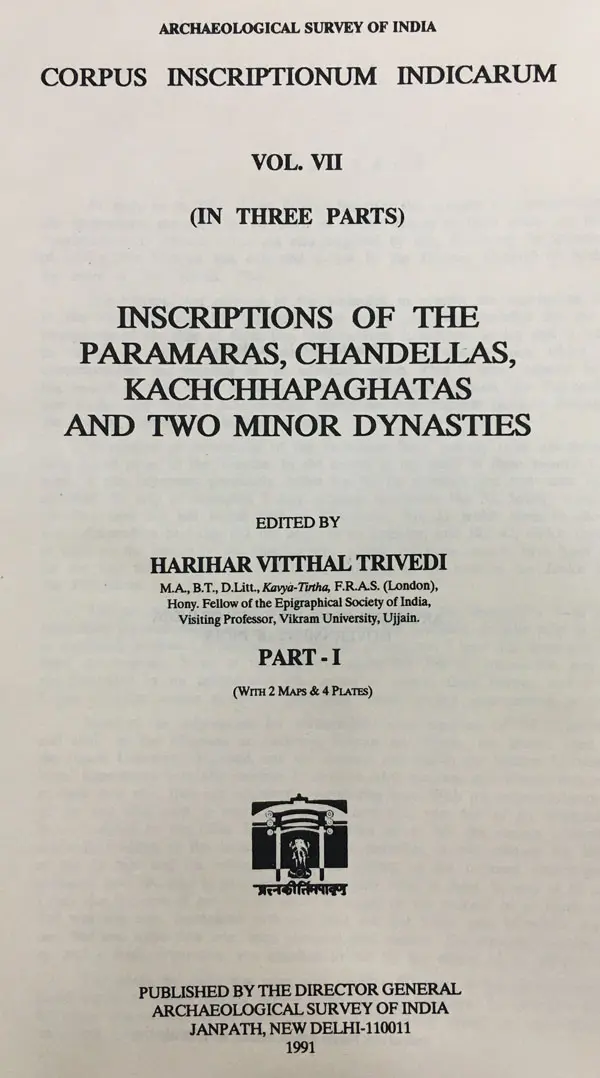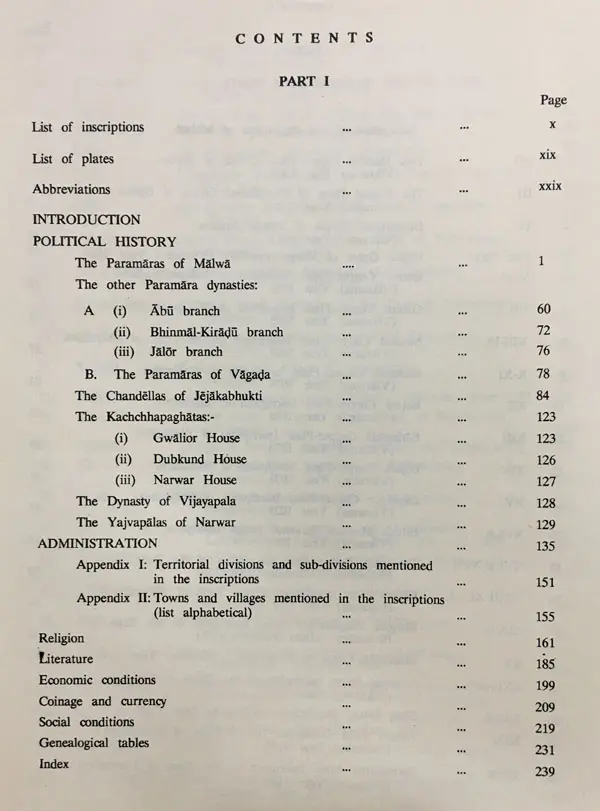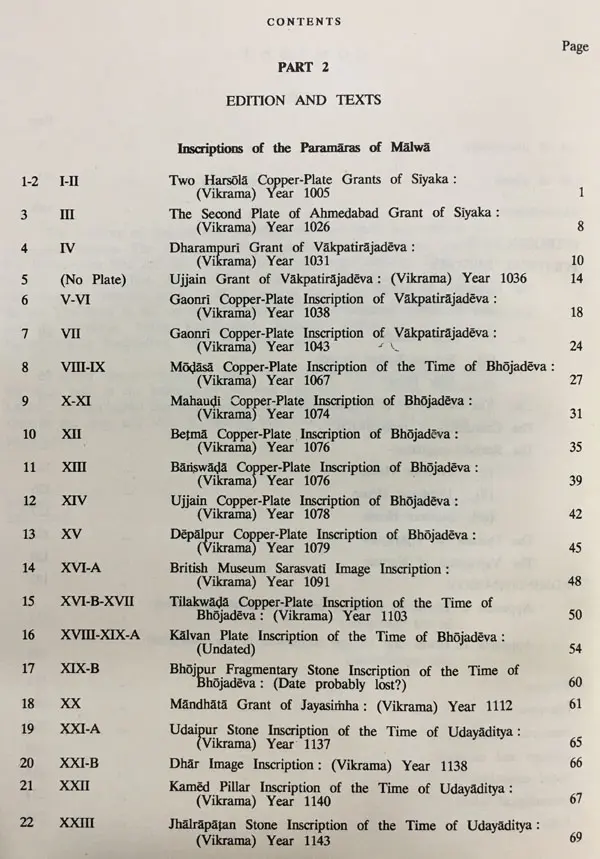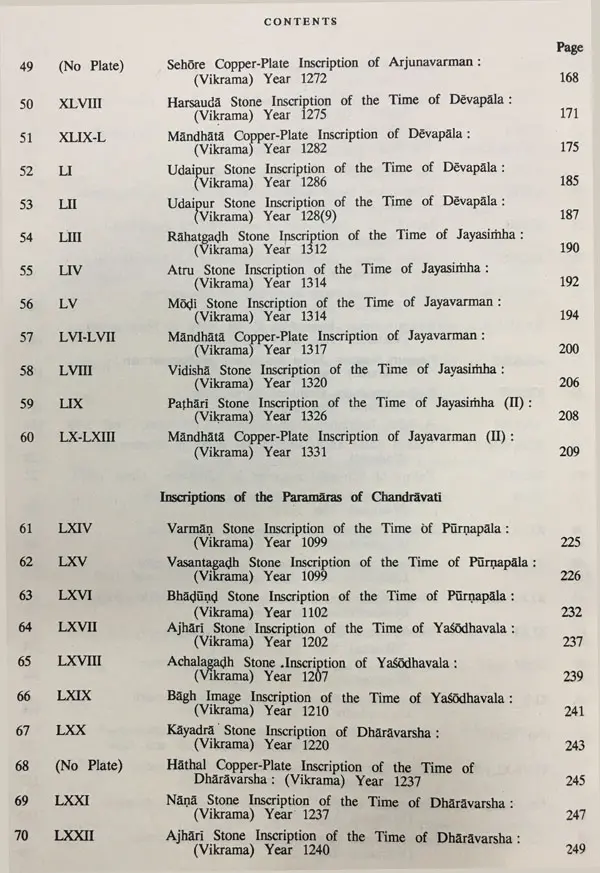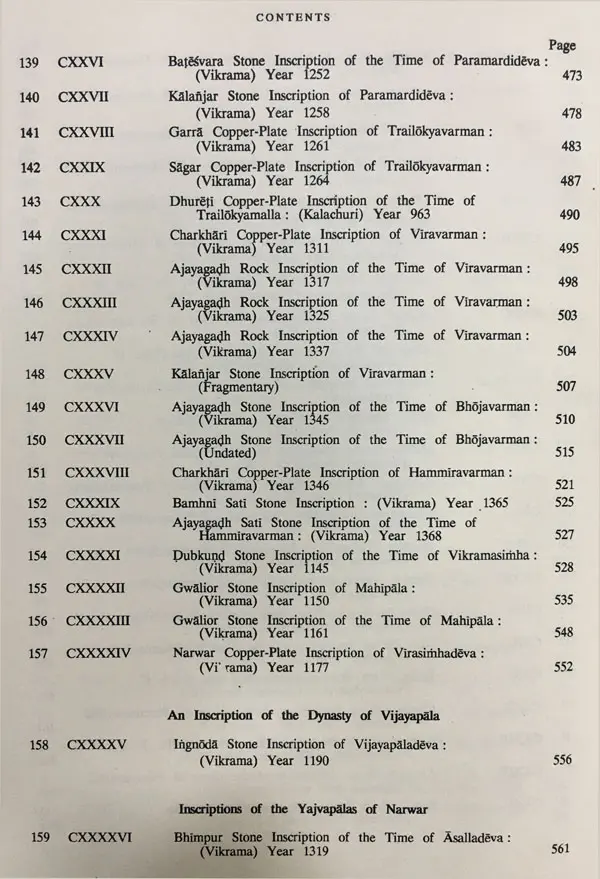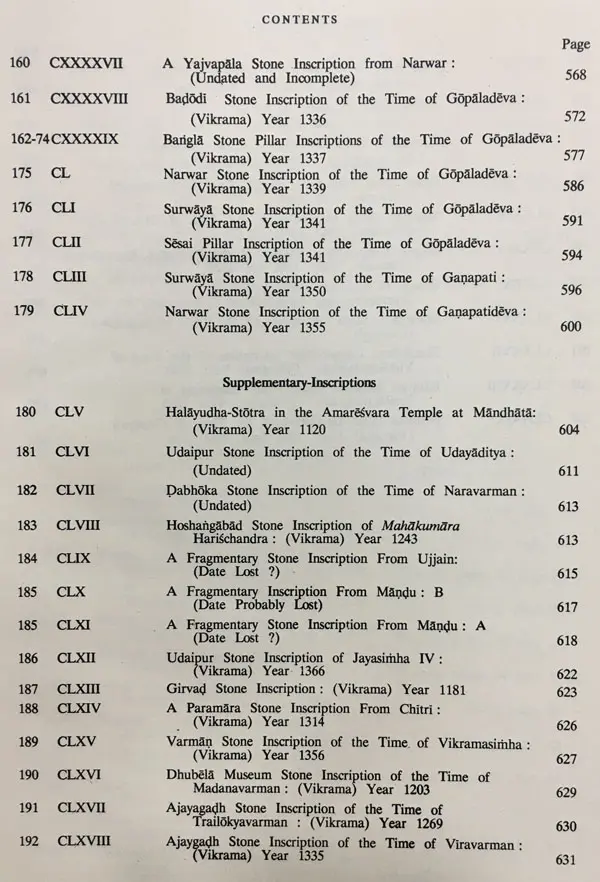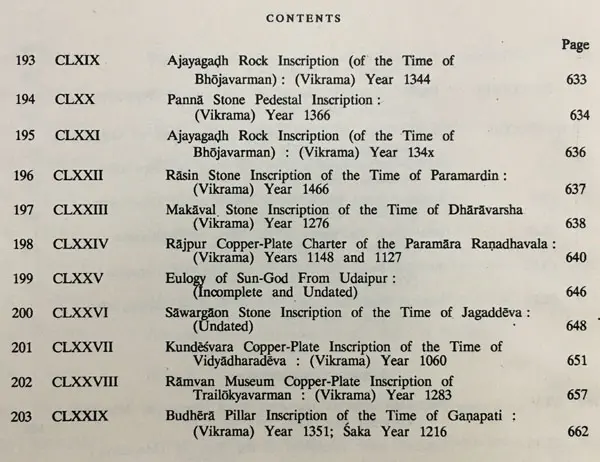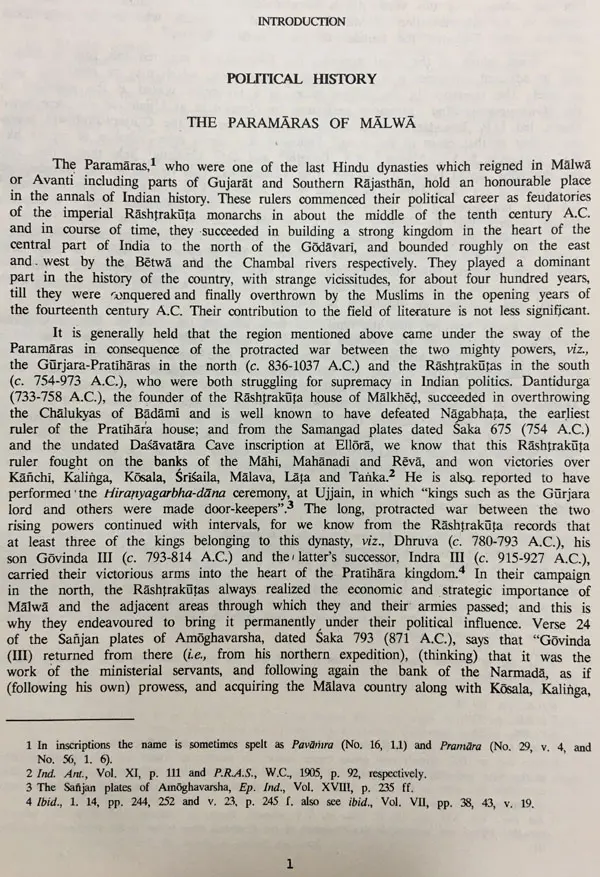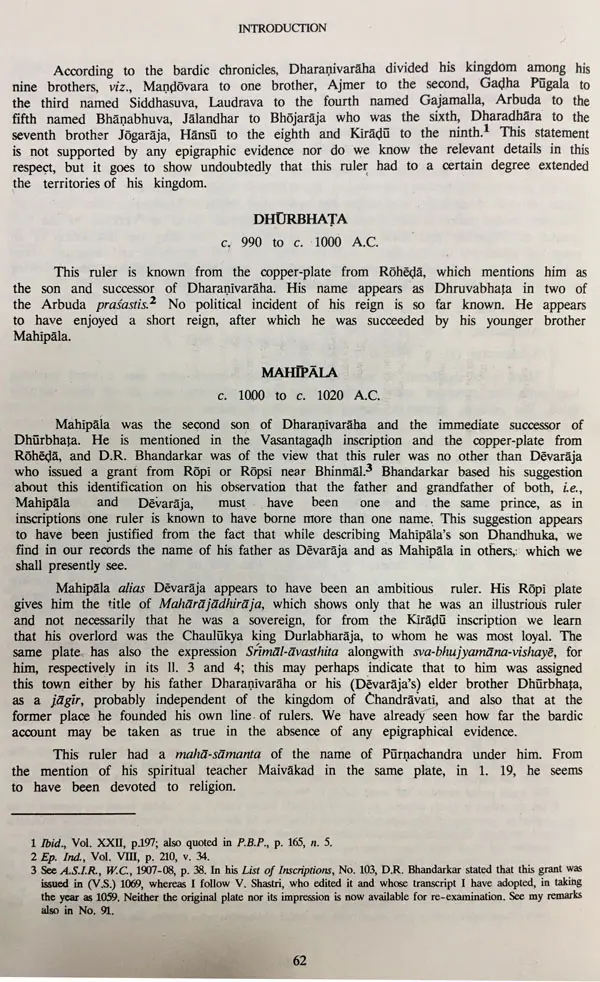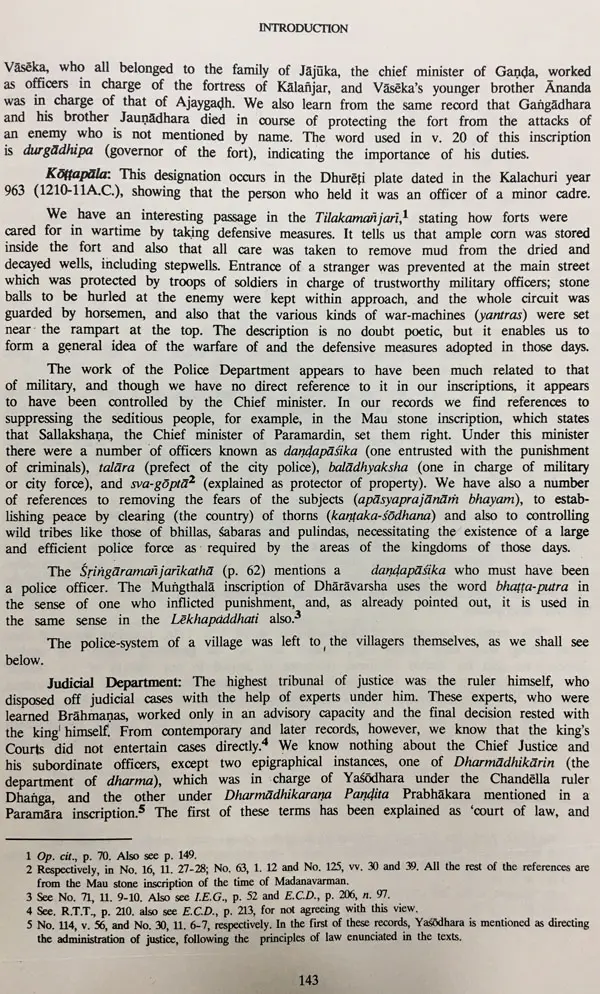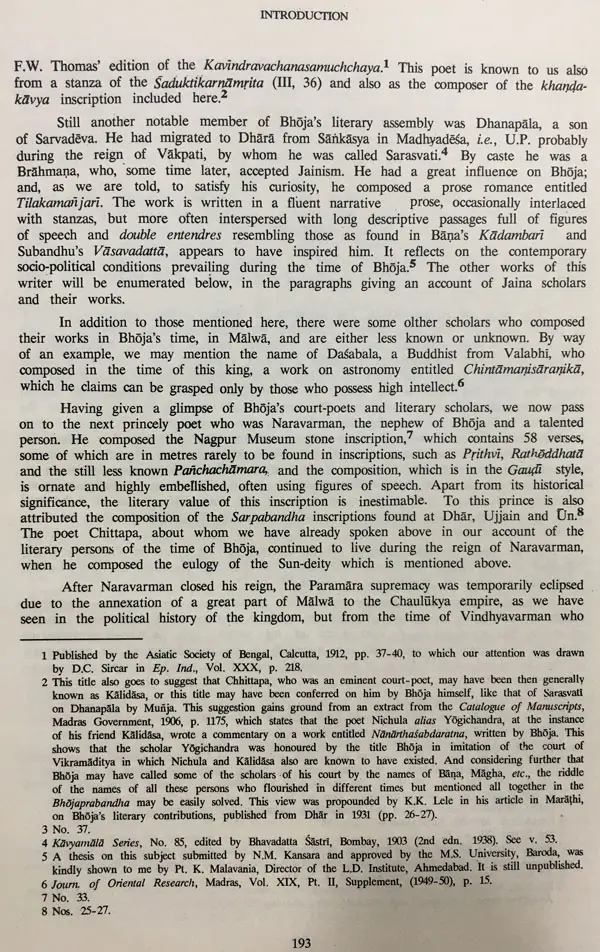
Corpus Inscriptionum Indicarum: Introduction to Inscriptions of the Paramaras, Chandellas, Kachchhapaghatas,etc. (Vol- 7, Part- 1 An Old and Rare Book)
Book Specification
| Item Code: | UAX063 |
| Author: | Harihar Vitthal Trivedi |
| Publisher: | ARCHAEOLOGICAL SURVEY OF INDIA |
| Language: | English |
| Edition: | 1991 |
| Pages: | 276 |
| Cover: | HARDCOVER |
| Other Details | 14.00 X 9.50 inch |
| Weight | 1.37 kg |
Book Description
The volume was planned in the beginning to contain the inscriptions of the time of the Paramaras and the Chandellas; but while preparing materials for my edition of inscriptions of the time of these two royal families, it occurred to me that it was desirable to include in this work the record of some minor dynasties also, which were their contemporaries and reigning in the adjoining region. Thus I have included in this work the records of three other dynasties, namely, the Kachchhapaghatas, the Yajvapalas and the one known only from a solitary stone inscription from Ingnida (ancient Ringanagara) in the Ratlam District of Madhya Pradesh.
A number of inscriptions of the Paramaras have recently been discovered; they all have found place in the Volume. In the course of my study of these records I found that some of the inferences previously drawn had to be supplemented and some others to be modified. By way of examples, I may mention inscription No. 31, below, which shows for the first time the last regnal year of Udayaditya, No. 21 which tends to show that his son Lakshmadeva probably did not reign as an emperor, and No. 42, which throws a flood of light on the history of the Mahkumaru period. All these records have been edited here for the first time, as also most of those belonging to the time of the Junior branches of the Paramaras.
The procedure usually followed by me in editing the inscriptions is to prepare the texts from ink-impressions and in case they were not available, to take help of photograph or previously published facsimiles. In a number of instances I have also compared my reading from the originals. Some of the originals, again, are lost or untraceable, and they were not illustrated by my predecessors who edited or noticed these records; and in such cases I had no other course except to give their actual reading accompanied by my notes.
Most of the impressions (or photographs) were supplied by the Chief Epigraphist and some by the Museums at Lucknow, Nagpur and Ajmer, the Bharat Kala Bhavan of the Hindu University, Varanasi, and the museum attached to the Vikram University, Ujjain. Inked impressions were also received from some other quarters; and though they were helpful in their own way, they are not worth reproducing here. With my acknowledgement to them all for this kind help, it may be remarked here that very few of the impressions besides those provided by the Chief Epigraphist enabled me to edit the records critically and give authentic readings of the texts; and I find it impossible to over-estimate the help rendered to me by him and his office, not only in picking up the required estampages from the extensive heap but also in preparing and supplying some of them. By way of an apt example, I may cite the case of our No. 89 which is incised on the pedestal of an image of Hanuman and was not only besmeared with red lead but the lower part of which containing the date had also some time later been plastered with cement. The cemented portion was broken up and a fresh impression was supplied to me by the efforts of an official of his staff!
This apart, my work was beset with another difficulty. A few of the inscriptions were found partly or wholly hidden behind some later constructions, for example, Nos. 180 and 92, below respectively. In all such cases, I had to satisfy myself by reproducing only their transcripts prepared by my predecessors.
The Introduction to this work gives the political history of the dynasties whose inscription are included here; and this Section is followed by an account of the administrative, religious, economic and social conditions of the time, as gleaned mainly from the inscriptions.
The Section on administration has been supplemented by two appendices, the first of which enlists the territorial divisions and the second the place-names mentioned in the inscriptions, alphabetically.
In all these Sections I have placed my attention more on the inscriptions and it is only occasionally that I have given references from the contemporary literature. We have extensive literature on varied subjects composed under the liberal patronage of the Paramaras; and to compress it all in a limited space would hardly do justice to the subject. Time and health permitting. I may be able to deal with it, separately, in future.
Book's Contents and Sample Pages
